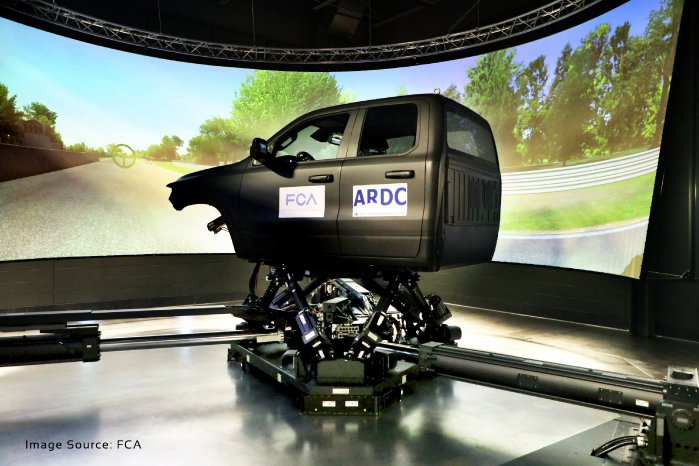The new VDS is cutting-edge technology that emulates a vehicle’s driving dynamics in a real time, virtual environment. This technology offers the driver a customized virtual immersion that replicates the ride and handling of a specific vehicle on a multitude of simulated road surfaces and driving environments.
Most driving simulators make use of six actuators to deliver basic body motion. However, to accurately reproduce vehicle ride, handling and acceleration characteristics, the VDS system uses nine actuators to create the full range of motion of an actual vehicle.
A notable feature of the new VDS is a very thin cushion of air, which floats the entire motion platform above the floor like a hovercraft, allowing for a quiet and seamless motion via the electric actuators.
The new simulator has the ability to add subsystems such as brake and steering, ABS (Anti-lock Brake System) and ESC (Electronic Stability Control) controllers to create a hardware in the loop test to better meet functional targets. This strategy helps reduce product development times and lower project validation costs.
“The ability to simulate a drive experience with Hardware-in-the-Loop is key to the engineering efforts of our customers and assists in identifying design changes much earlier in the development process,” said Guido Bairati, VP Sales and Marketing, VI-grade. “By using our simulators, our customers can create a virtual testing environment to assess the ride and handling of a vehicle, perform tests and validation on sensor technology for Advanced Driver Assistance Systems (ADAS) applications, evaluate different Human Machine Interface (HMI) configurations, and test for driver distraction and distraction remedies.”
The simulator can be fitted with any vehicle body, road and environment. To create a visual experience on the five projector screens, data is collected by scanning the environment and roads, such as FCA’s proving grounds in Chelsea, Michigan. The data is then integrated to create a real-time virtual environment that includes elevation changes, off-camber roads and potholes.
Initially, the VDS will be used to support Chassis Vehicle Dynamics, but in the future will be used to support development of ADAS and HMI systems.

